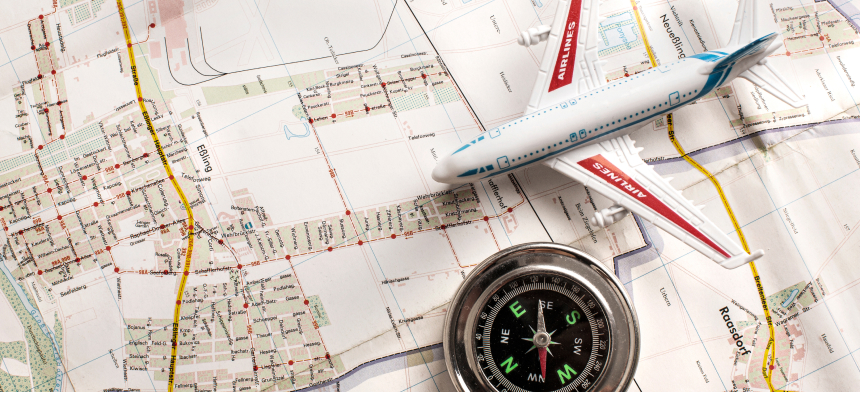Are you curious about how airlines make money?
Have you ever wondered which routes are the most profitable for airline companies?
You might be surprised to know that not all airline routes are created equal. Some can generate millions of dollars in revenue while others barely break even.
In this blog post, we will explore what airline route profitability means, the factors that affect it, the benefits of analyzing it, and ways to manage it effectively.
What is Airline Route Profitability?
At its core, airline route profitability refers to the amount of money an airline makes from operating flights on a specific route after deducting all related costs. These costs include fuel, crew salaries, maintenance, airport fees, and other expenses associated with running an aircraft. The difference between the revenue generated and these costs determines whether a route is profitable or not.
Factors That Affect Route Profitability
Several factors influence airline route profitability, including:
Demand and Competition
High demand for travel on a particular route generally leads to higher ticket prices and increased profitability. Conversely, lower demand could result in decreased revenue, making it challenging to maintain profitability.
Similarly, less competitive routes usually offer greater flexibility regarding fares, whereas highly competitive ones often necessitate price wars that eat away at profits. Airlines must strike a balance between serving popular routes and exploring uncharted territories with untapped potential.
Seasonality
Certain destinations experience peak seasons when demand soars, leading to increased fares and higher yields. During off-peak periods, however, airliners might struggle to fill their cabins, resulting in lower revenues.
Effective planning and strategic scheduling become crucial elements in maintaining consistent profitability throughout the year. Adjusting capacities according to demand trends enables airlines to capitalize on seasonal shifts without compromising profit margins.
Distance and Flight Time
Longer flights require more fuel, which directly impacts operational costs. Moreover, extended journey durations might deter passengers who prefer non-stop services over connecting flights. Shorter routes provide ample opportunity for quick turnarounds and frequent departures, potentially generating substantial daily revenue.
However, they also face intense competition since many players target similar city pairs. Careful consideration should go into evaluating the optimal mix of long-, medium-, and short-haul flights within an airline’s portfolio.
Airport Charges
Various types of fees levied by airports contribute significantly to an airline’s total expenditure. Landing fees, gate rental costs, baggage handling charges, and other miscellaneous expenses vary among airports.
Selecting bases and stations with affordable infrastructure costs provides a significant advantage in preserving route profitability. Additionally, negotiating favorable terms with airport authorities through volume discounts or multi-year contracts can further reduce overheads and enhance earnings.
Fleet Utilization
Optimal allocation of aircraft assets plays a critical role in ensuring maximum returns from every trip. Deploying larger planes on busy routes ensures sufficient capacity to meet demand while minimizing unit costs. Simultaneously, smaller jets serve thinner markets efficiently without oversupplying capacity.
Efficient fleet management entails monitoring usage patterns, performing regular maintenance checks, and upgrading equipment periodically to keep pace with technological advancements and evolving consumer preferences.
Currency Exchange Rates
International routes expose airlines to foreign exchange rate volatility, impacting revenue recognition and financial reporting. When unfavorable movements occur, revenues earned abroad translate into fewer domestic currency units, eroding profitability.
Hedging strategies using forward contracts or options can mitigate exposure to adverse fluctuations; thus, protecting cash flows and enhancing stability in financial projections.
Market Conditions
Broader macroeconomic factors, such as economic recessions, political instability, terrorism threats, natural calamities, and global pandemics, pose significant challenges to route profitability.
Such external shocks disrupt normalcy, causing sudden drops in demand and triggering cancellations. Proactive risk assessment methodologies combined with robust contingency planning ensure resilience against unexpected crises, helping safeguard airline finances amidst turbulent times.
Benefits of Route Profitability Analysis
Analyzing airline route profitability offers numerous advantages, such as:
Identifying Lucrative Opportunities
A thorough analysis of route profitability helps airlines pinpoint the most profitable routes, empowering them to capitalize on existing strengths. They can then strategically deploy resources, enhance service frequency, and invest in marketing campaigns to fortify their position in these markets further.
Moreover, recognizing trends in profitable routes assists airlines in exploring new prospects and replicating success stories in similar markets.
Optimal Schedule and Capacity Adjustments
Delving into historical data unveils patterns pertaining to demand and supply dynamics. Consequently, airlines can fine-tune schedules, modify frequencies, and right-size aircraft configurations according to seasonal variations, special events, or emerging travel preferences.
Such tailored approaches reduce the likelihood of empty seats, augment revenue generation through higher load factors, and ultimately elevate overall profitability.
Enhancing Operational Efficiency
Assessing route profitability sheds light on various aspects of operational performance, revealing bottlenecks and scope for improvement. Airlines gain valuable insights into optimal turnaround times, ground handling procedures, and resource allocation, ensuring seamless integration of processes throughout their networks.
Furthermore, they can scrutinize fuel consumption, maintenance intervals, and personnel scheduling, leading to meaningful reductions in controllable costs without compromising safety standards or quality of service.
Proactive Risk Management
Predictive modeling techniques employed in route profitability analyses enable airlines to anticipate shifts in market conditions, fluctuating currencies, and evolving competitive landscapes.
Armed with foresight, airlines can devise robust mitigation measures to counteract adverse effects proactively rather than reactively.
For instance, hedging against volatile fuel prices, negotiating favorable contractual terms with suppliers, or diversifying portfolios across complementary segments (e.g., cargo operations) could cushion blows triggered by external forces beyond immediate control.
Foster Data-Driven Decision Making
Embracing a culture centered around quantitative evidence paves the way for well-founded strategic choices at every level within the organization.
Equipped with actionable intelligence gleaned from rigorous route profitability assessments, stakeholders can confidently address critical issues, such as evaluating partnership proposals, contemplating entry into new markets, revamping loyalty programs, or upgrading ancillary services. Ultimately, fostering a data-driven mindset propels airlines towards sustainable growth trajectories powered by informed decision-making.
Ways To Manage Airline Route Profitability
To effectively manage airline route profitability, consider implementing the following strategies:
Continuous Monitoring of KPI
Keep track of essential KPIs, such as load factor, yield, and revenue per available seat mile (RASM), to assess route performance regularly. Regular monitoring ensures timely identification of trends and issues, allowing for quick corrective action if needed.
Utilize Advanced Analytics Tools
Leverage sophisticated analytical solutions capable of processing large datasets containing historical and real-time information. Such tools empower airlines to uncover hidden patterns, and correlations, and predict future scenarios, leading to improved decision-making.
Develop Adaptable Pricing Strategies
Create dynamic pricing approaches that respond to fluctuating demand levels and competitive pressures. Implement tactics like price discrimination, fare bundling, ancillary services, and loyalty programs to attract customers and enhance revenue generation.
Collaboration with Partners
Forge strategic partnerships through codeshare agreements, joint ventures, and interlines to broaden networks and reduce overhead costs. Partnering with other airlines, ground handling agents, and travel providers enhances brand visibility, generates new revenue streams, and fosters innovation.
Explore Alternative Business Models
Embrace innovative business models tailored to various niche segments within aviation, such as low-cost carriers, hybrid carriers, or cargo operators. Assess the feasibility of offering unique products and services targeted at underserved markets, helping secure additional sources of income and ensuring long-term sustainability.
Best Airline Route Profitability Tool
REPLAN is a powerful and user-friendly software for airline route profitability. It provides comprehensive insights into your network’s financial health, allowing you to identify high-performing and underperforming routes quickly. With features like SSIM Explosion, Revenue – Passenger & Cargo, and Operating & Production Stats, REPLAN empowers you to make informed decisions that drive growth and increase profitability.






